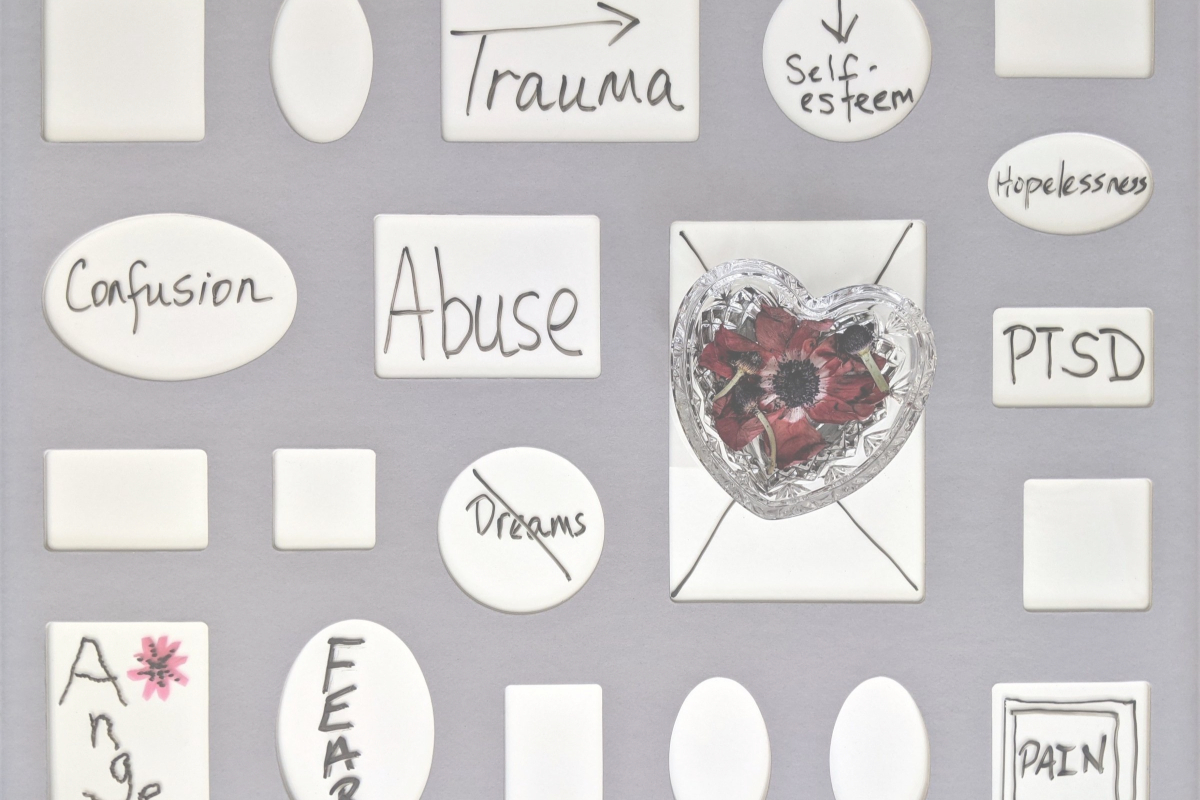Hi! Welcome back to Part 2 of this series on Can You Heal from Relational Trauma. If you missed the first post, you can read it here.
This series of blog posts is a review of Gretchen Schmelzer’s book, “Journey Through Trauma: A Trail Guide to the 5-Phase Cycle of Healing Repeated Trauma.” I believe her book provides valuable insights into the latest research on trauma, offering hope for individuals who may feel broken, sad, and trapped in their past experiences. In Part 1, we defined relational trauma, discussed its impact, and explored 7 key points that Gretchen wants you to understand about the experience of relational trauma.
I hope you’re here because something in my last post resonated with you and sparked a feeling of hope. But before we delve into the 5 phases of healing in Part 3, I’d like to take a deeper look into how trauma impacts your identity and your perception of yourself. Understanding how relational trauma fractures your story about yourself and the world is crucial to your healing.
It is Never Too Late to Heal
Two key points from Gretchen’s 7 points to keep in mind:
- It is never too late to heal: Our brains are malleable and continue to grow throughout our lives. The brain’s ability to expand is what allows our survival and it’s this same plasticity that allows healing. Thanks to advancements in neuroscience, we’ve gained valuable knowledge about the brain and trauma in recent decades. This knowledge can help you understand what happened to you. Gretchen writes, “I want you to understand how trauma works – how it impacts the brains and bodies. I want you to understand the genius of our brains and bodies for survival. Understanding how it all works gives you a platform from which to grow and leap and try new things.”
- You aren’t crazy: She says, “I want you to understand that all that turmoil that can happen inside of you makes sense.” Understanding how trauma affects the brain and body is vital to your healing. I agree. Many of my clients initially feel that something is seriously wrong with them. They describe being overwhelmed and lost, not recognizing themselves anymore. Some even blame themselves or fail to realize they’re in an abusive relationship. Relational trauma can leave a person feeling completely shattered, lost, and lacking a coherent sense of identity.
What’s Your Story? Your Whole Story?
Gretchen writes, “When you experience trauma as a child, the trauma interferes with your ability to create a self or to see yourself as the narrator of your story. When you experience trauma as a teenager or adult, the trauma shatters your identity and robs you of the story you knew about yourself and your world. The goal of healing from trauma is to put all the shattered pieces together and make yourself whole again – really, to create a whole new self.” Gretchen calls this “re-storying.” I love the term because it describes the act of bringing together the many pieces and parts that make up who you are, including your trauma. It’s the act of expanding your story beyond your trauma.
In the first blog, we learned that trauma requires strong defenses for survival, but at the same time, it hinders personal growth and hope for the future. Relational trauma can disrupt your life story. Healing involves regaining access to your entire story, even if it’s for the first time. What does this mean? It means that you don’t have to let your trauma define you. Trauma doesn’t have to be the only story you tell about yourself. It’s a part of you, but as you move past it, your story expands too.
Why Stories Matter: How Your Stories Shape Who You Are
Have you ever wondered why we tell stories about our lives? Personal narratives are more than just compilations of experiences; they are powerful tools that shape how we see ourselves and our world. Having a coherent narrative, or story, about ourselves is important because it’s how we tell ourselves and others about our lives. Narratives include key events, experiences, and interpretations that form cohesive accounts of who we are. Unlike other forms of storytelling, personal narratives are deeply intertwined with our emotions, beliefs, and memories. They are subjective, evolving, and uniquely our own.
Personal Narratives
Personal narratives are pivotal in shaping our identity. They are more than just factual accounts; they are interpretations that directly impact our self-perception, guiding our thoughts, feelings, and actions. For instance, individuals who view themselves as resilient tend to perceive challenging experiences as tests of their strength rather than setbacks.
From a cognitive perspective, personal narratives help us make sense of the world by organizing our experiences into a structured format, allowing us to draw connections and derive meaning. This cognitive process is essential for self-awareness and personal growth, enabling us to reflect on our past, understand our present, and envision our future.
Your personal stories not only hold significance, but they are also crucial to your existence as a human being. They offer a structure for understanding your experiences, connecting with others, and finding purpose in your life. Gretchen writes, “There is a difference between a healthy life story or narrative and a trauma story. Healthy life stories have a past, a present, and a future. Healthy life stories have coherence. The simplest definition of coherence is a story, placed in time with a beginning, middle, and end. A coherent narrative has thematic coherence, which means the story hangs together; it makes sense. And a coherent narrative also has causal coherence, which is an understanding of how one event led to another.” She further explains that a coherent sense of who you are is necessary for your well-being.
Trauma Shatters Your Story
Trauma disrupts your narrative and impacts your entire being by interfering with your brain, affecting memory, language, emotional regulation, self-perception, and growth. It changes how you see the world, interact with others, and tell your story. Let’s examine three physiological effects on the brain:
-
- Changes in Neural Pathways Trauma can impact the brain’s structure and function. It can disrupt neural pathways that were once effective. This may result in the amygdala, responsible for processing fear and emotional responses, becoming overactive, while the prefrontal cortex, responsible for decision-making and impulse control, may become underactive.
- Neurotransmitter Levels Trauma can affect neurotransmitter levels. For example, it can cause a decrease in serotonin, which regulates mood, leading to feelings of depression and anxiety. Similarly, cortisol, a stress hormone, may remain elevated, keeping the body in a constant state of alertness. A common result of relational trauma is hypervigilance.
- Brain’s Plasticity Despite these changes, the brain is incredibly resilient. Neuroplasticity enables the brain to adapt and rewire itself, providing hope for recovery. With adequate support and interventions, it is possible to rebuild neural pathways and restore brain function.
The brain’s neuroplasticity is great news! Why? Your story may feel shattered, leaving you feeling broken, fragmented, and lost. But with intention, you can rewire and create lasting change. You can bring the pieces of your life, including your trauma story, together to create a new, whole, and coherent narrative. Gretchen writes, “The act of re-storying is an act of integration – that is to say the goal is to bring together all the pieces of yourself, your life, and your story so that you can become whole. It means having a whole story. And it means having a self – a self who is whole, who is integrated, and who is the main narrator of that story. It means having a story of your life that includes your past and your present”. It means having hope and vision for the future.
Stay Tuned for Part 3
Learning about how trauma affects your brain, your identity, and your sense of self is the first important step on the path to healing. It is fundamental to the 5-phase cycle of healing outlined by Gretchen in her book. In Part 3, I will outline the 5-phase cycle of healing for repeated trauma.
I hope you’ll continue to join me to learn more about the healing process. As a Relational Trauma Therapist in Texas, I hope these posts are helping you to understand that how you feel makes sense, that healing is possible, and that you are realizing that you are more than your trauma.
Reach out for a free consultation and discover how we can work together to address and heal your relational trauma.

Recent Posts
Can You Heal from Relational Trauma? Part 3
Hello again! Welcome to the third and final blog post where we dive into Gretchen Schmeltzer’s insightful book, "Journey Through Trauma: A Trail Guide to the 5-Phase Cycle of Healing Repeated Trauma." If you [...]
Can You Heal from Relational Trauma? Part 2
Hi! Welcome back to Part 2 of this series on Can You Heal from Relational Trauma. If you missed the first post, you can read it here. This series of blog posts is a [...]
Can You Heal From Relational Trauma? Part 1
Absolutely, you can heal from relational trauma! In this series of blog posts, I'm excited to introduce you to Gretchen Schmelzer’s Trail Guide to the 5-Phase Cycle of Healing Repeated Trauma. Gretchen, a psychologist, trauma [...]







